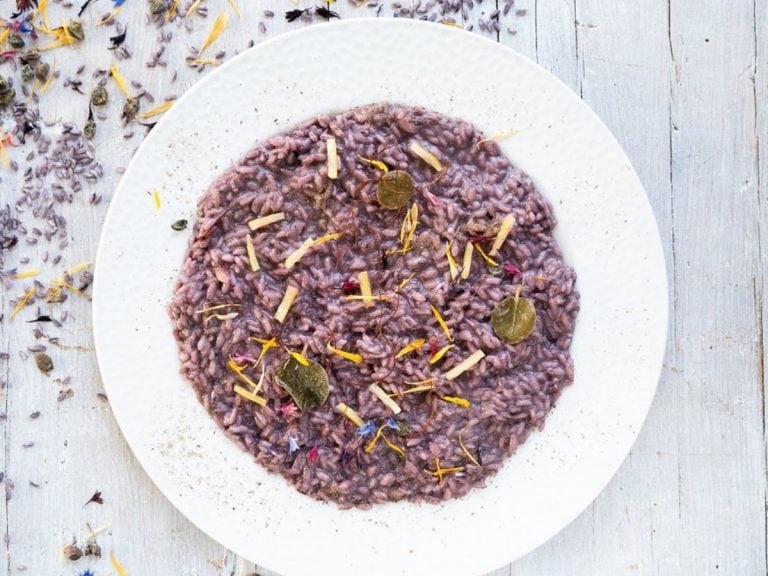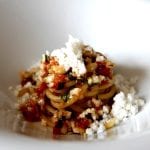Freeze-drying is a process that was originally born in the pharmaceutical industry (think powdered baby formula or baby food) and subsequently it also spread widely in the industrial market as an effective tool for food conservation. Until a few years ago it was only the prerogative of large industries, given the prohibitive cost of freeze-drying machinery, but today, thanks to a greater demand in the dining sector, it's possible to find affordable equipment on the market, used in restaurants where research and personalisation of dishes are at the base of the work.
Basic principle: sublimation
The physics principle on which freeze-drying is based is the evaporation of water present inside the food, with matter going from the solid state to the gaseous state without ever passing through the liquid state, this is better known as sublimation. The benefits of the process lie in the fact that many thermolabile vitamins are normally lost with the classic drying processes. In this case however, since there is no heat applied, nutrients remain unaltered.
The process of freeze-drying
Freeze-drying is achieved through various stages. Initially, the temperature of the product is lowered below freezing point in order to easily extract moisture. In the next phase, dehydration is carried out, causing the evaporation of the ice (sublimation) and finally the temperature is gradually increased to extract any remaining moisture in the product. This process keeps the physical structure of the food intact and preserves it for rehydration at a later time: at the end of the process, lending a product of the highest nutritional, organoleptic and taste quality. Colours are furthermore vivid and the essential oils are still all present.
Correct packaging
The prerogative of correct storage of freeze-dried food is also correct packaging after the freeze-drying process: storage must be in special vacuum-sealed bags since contact with humidity and air tend to compromise the correct food conservation. It's therefore very easy for the product to deteriorate quickly, thus losing its qualities, as well as incurring harmful proliferation of moulds that would make it dangerous for consumption.
Freeze-drying: use in the kitchen
In restaurant kitchens, freeze-drying has many applications: the products treated in this manner can be used directly in dishes to obtain a preparation with a crunchy texture and unique flavour concentration. But this technique can also be used with finished recipes, such as pizza, Milanese-style saffron risotto or tiramisu. Use in the kitchen is therefore tied to the chef's imagination, having a clear understanding of the possibilities offered by this tool.
Technology and human capital
Often, in fact, purchasing the hardware, no matter how advanced, is not enough to exploit all of the freeze-dryer's potential. For this reason it's paramount that in addition to the purchase there are training and consultancy services that allow users to make the best use of each tool, in order to integrate it, and provide chefs' kitchens with real added value. For this reason Gourmet Services, which deals with dining equipment, offers pre- and post-sales service 365 days a year, for the freeze dryer as for all other products. The company in fact features a team with a Corporate Chef who supports and supervises the installation of the machinery in chefs' kitchens and offers training support to start using the equipment and their implementation in the line. In addition, a pool of highly specialised technicians ensures all-round tech assistance and support at any time.
A recipe using a freeze dryer
A surprising and very innovative recipe, as explained by the Corporate Chef of Gourmet Services, that uses a freeze dryer, is the reinterpretation of a classic Mediterranean cuisine specialty: ravioli filled with ricotta and dressed with tomato and basil. The procedure consists in freezing the main ingredients: ricotta, tomato and basil. In order to offer diners a 2.0 cuisine with high technological impact, a sheet of obulato is used instead of the classic rolled out egg pasta sheet. By inserting the freeze-dried ricotta in the pockets, the ravioli are sealed and served with a sprinkling of freeze-dried and blended tomato in powder form, and finally a freeze-dried basil leaf placed on top.


 Vinitaly 2025: "Piwi should not be included in the DOCs. Dealcoholised wines? I have changed my mind." Angelo Gaja's position
Vinitaly 2025: "Piwi should not be included in the DOCs. Dealcoholised wines? I have changed my mind." Angelo Gaja's position Vinitaly 2025: here are all the events by Gambero Rosso. Tre Bicchieri, debates, TV and much more...
Vinitaly 2025: here are all the events by Gambero Rosso. Tre Bicchieri, debates, TV and much more... A giant rice grown in the land of buffaloes: the story of a bourbon edict
A giant rice grown in the land of buffaloes: the story of a bourbon edict Where to eat in the Majella park, amidst stunning landscapes and authentic cuisine
Where to eat in the Majella park, amidst stunning landscapes and authentic cuisine No more identical venues and overtourism food—let’s start again with lunch and trattorias
No more identical venues and overtourism food—let’s start again with lunch and trattorias







